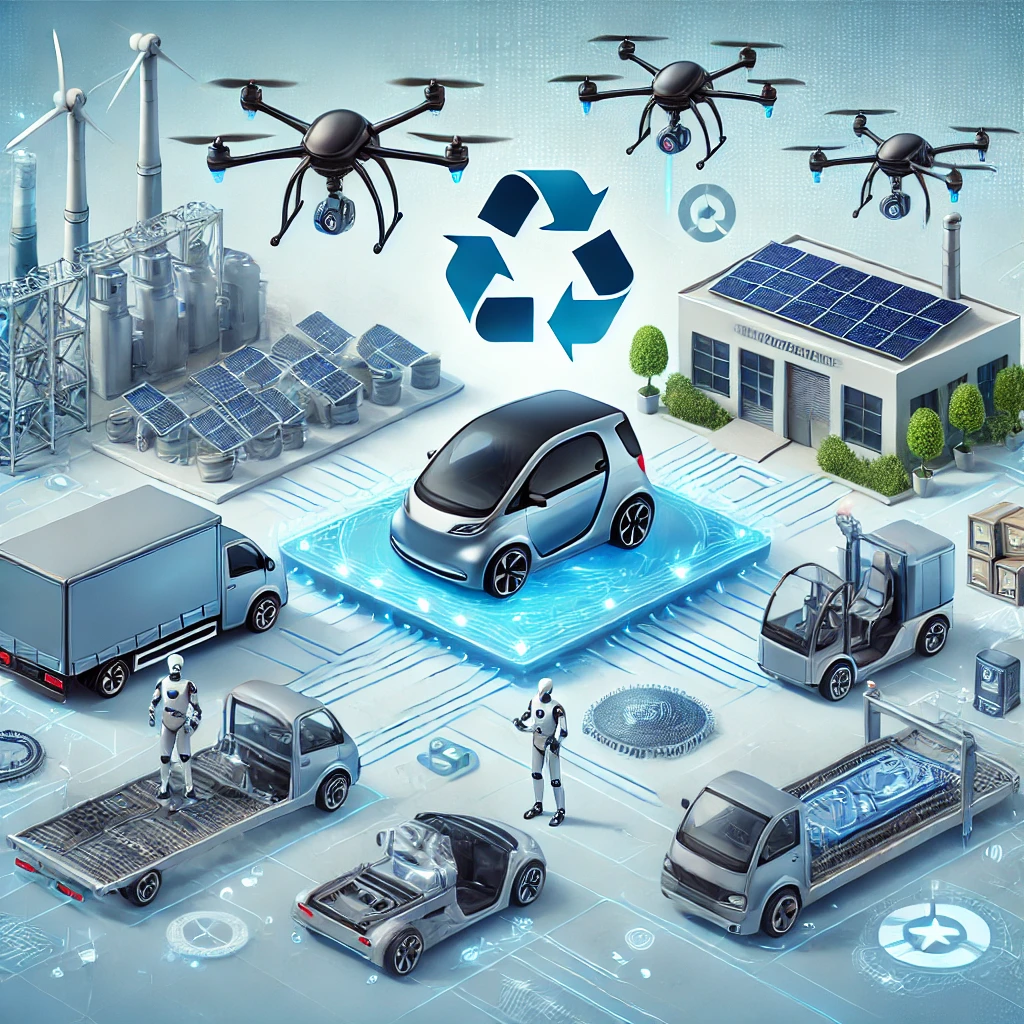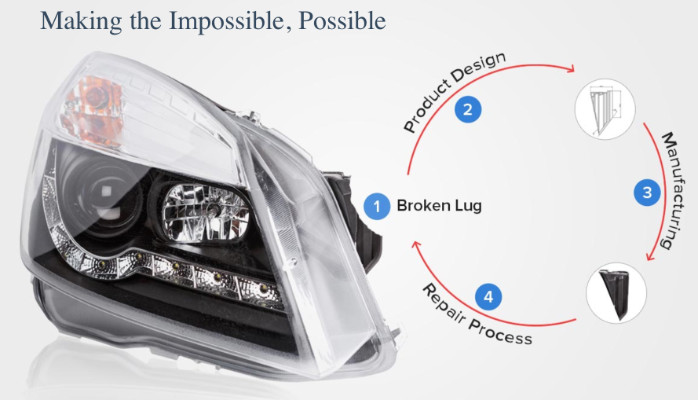Rapid advancements in technology are poised to reshape logistics and supply chain processes, driving efficiency, sustainability, and innovation. From the integration of artificial intelligence (AI) to the rise of additive manufacturing, these changes promise to redefine how parts are sourced, distributed, and utilized within repair facilities. In the next five years, the industry’s landscape will undergo significant shifts, creating both challenges and opportunities for stakeholders.
1. The Rise of Predictive Analytics and AI-Driven Systems
One of the most significant technological advancements influencing supply chains is the application of predictive analytics and AI. These technologies enable real-time forecasting and optimization, allowing repair facilities to anticipate demand and minimize delays.
- Inventory Management: AI-driven systems can analyze historical data, weather patterns, and market trends to predict which parts will be in demand. This reduces overstocking and ensures that essential components are available when needed.
- Dynamic Routing: Logistics providers are adopting AI-powered tools to optimize delivery routes in real-time, minimizing delays caused by traffic, weather, or unforeseen disruptions.
- Supplier Collaboration: Predictive analytics fosters better collaboration between suppliers and repair shops by providing accurate demand forecasts, ensuring a steady flow of required parts without excess inventory.
2. Additive Manufacturing: A Game-Changer for Parts Supply
Additive manufacturing, commonly known as 3D printing, is revolutionizing the way parts are produced and distributed in the collision repair industry. By enabling localized production, this technology reduces reliance on global supply chains and shortens lead times.
- On-Demand Production: Repair shops can use 3D printers to create parts in-house or through local manufacturing hubs, eliminating the need to wait for shipments from distant suppliers.
- Cost Savings: Additive manufacturing reduces the costs associated with warehousing and transportation, particularly for low-volume or specialty parts.
- Customization: The technology allows for the production of customized parts, addressing unique repair needs that might otherwise require long lead times or specialized sourcing.
3. Autonomous Delivery and Robotics
Advancements in robotics and autonomous technology are set to transform logistics operations, enhancing speed and efficiency.
- Autonomous Vehicles: Self-driving delivery trucks and drones will play a pivotal role in transporting parts. These technologies can operate 24/7, significantly reducing delivery times.
- Warehouse Automation: Robotics are increasingly being used in warehouses for sorting, packing, and inventory management. Automated systems improve accuracy and efficiency while reducing labor costs.
- Last-Mile Delivery Innovations: Companies are experimenting with autonomous last-mile solutions, such as delivery robots, to ensure faster and more reliable part deliveries to repair shops.
4. Blockchain for Transparency and Traceability
Blockchain technology is emerging as a powerful tool for enhancing transparency and traceability in supply chains. By providing a secure, immutable ledger of transactions, blockchain ensures accountability and builds trust among stakeholders.
- Part Authenticity: Blockchain can be used to verify the authenticity of parts, ensuring they meet OEM standards and reducing the risk of counterfeit components.
- Supply Chain Visibility: Real-time tracking of parts through the supply chain enables repair shops to monitor shipments, reducing uncertainty and improving planning.
- Sustainability Reporting: Blockchain facilitates tracking of parts’ lifecycle, enabling businesses to report on their sustainability efforts and meet environmental goals.
5. Sustainability and Circular Supply Chains
Sustainability is becoming a critical focus for the automotive repair industry. Circular supply chains, which emphasize reuse and recycling, are gaining traction as businesses strive to reduce waste and carbon emissions.
- Parts Refurbishment: Increasingly, damaged parts are being repaired and reused rather than discarded, reducing environmental impact and lowering costs.
- Recycling Initiatives: Manufacturers are designing components with recyclability in mind, creating closed-loop systems where materials from end-of-life parts are used to produce new ones.
- Eco-Friendly Logistics: Logistics providers are adopting green practices, such as using electric delivery vehicles and optimizing routes to reduce fuel consumption.
6. The Role of IoT in Supply Chain Optimization
The Internet of Things (IoT) is revolutionizing logistics by providing real-time data from connected devices. Sensors embedded in vehicles, parts, and shipping containers enable smarter decision-making and streamlined operations.
- Condition Monitoring: IoT devices can monitor the condition of parts during transit, ensuring they arrive in optimal condition.
- Fleet Management: Connected vehicles provide data on fuel usage, maintenance needs, and route efficiency, helping logistics companies improve their operations.
- Smart Warehousing: IoT-enabled warehouses use sensors and automated systems to manage inventory, track parts, and optimize storage.
7. Enhanced Collaboration Through Digital Platforms
Digital platforms are fostering greater collaboration across the supply chain, connecting manufacturers, distributors, repair shops, and insurers in a unified ecosystem.
- Integrated Systems: Platforms that integrate inventory management, order tracking, and payment processing streamline operations and improve communication.
- Marketplace Models: Online marketplaces are enabling repair shops to source parts from a broader network of suppliers, increasing competition and driving down costs.
- Training and Support: Digital platforms also facilitate training and support for technicians, ensuring they can handle new technologies and materials effectively.
8. Challenges and Considerations
While the future looks promising, several challenges must be addressed to fully realize the potential of these advancements:
- Cost of Implementation: Investing in new technologies requires significant upfront costs, which may be prohibitive for smaller businesses.
- Data Security: As supply chains become more connected, protecting sensitive data from cyber threats becomes critical.
- Skill Gaps: The adoption of advanced technologies necessitates upskilling for technicians and logistics professionals, creating a need for comprehensive training programs.
Conclusion: Embracing Change for a Smarter Future
The next five years will bring profound changes to logistics and supply chains in the auto repair and collision industry. By embracing technologies such as AI, additive manufacturing, and blockchain, businesses can achieve greater efficiency, sustainability, and customer satisfaction. However, navigating this transformation requires strategic planning, investment in training, and a commitment to innovation.
As the industry evolves, those who adapt to these changes will not only thrive but also set new benchmarks for excellence. The integration of advanced technologies into logistics and supply chain operations is not just an opportunity—it’s a necessity for staying competitive in a rapidly changing world.


